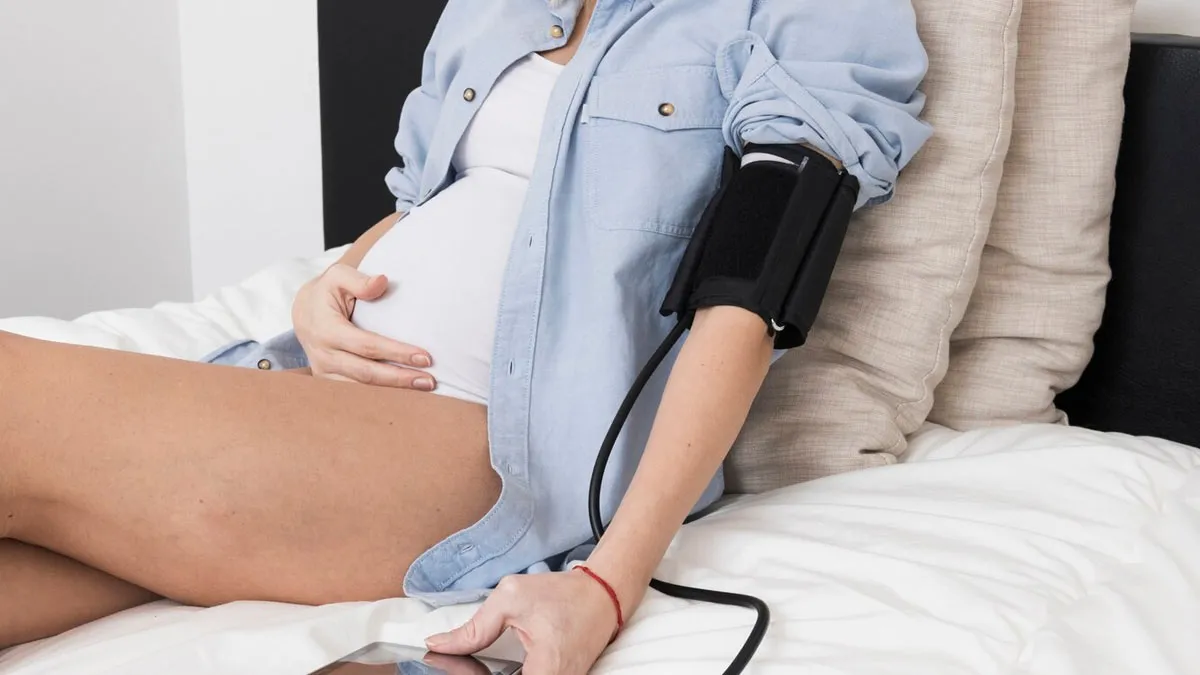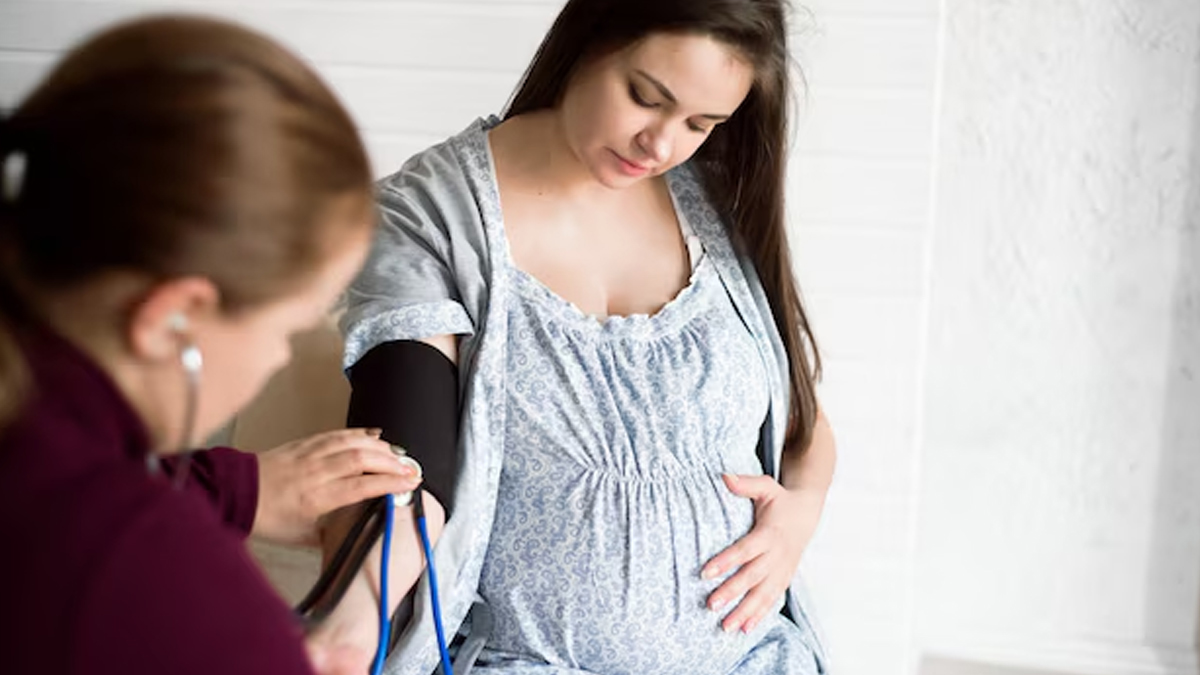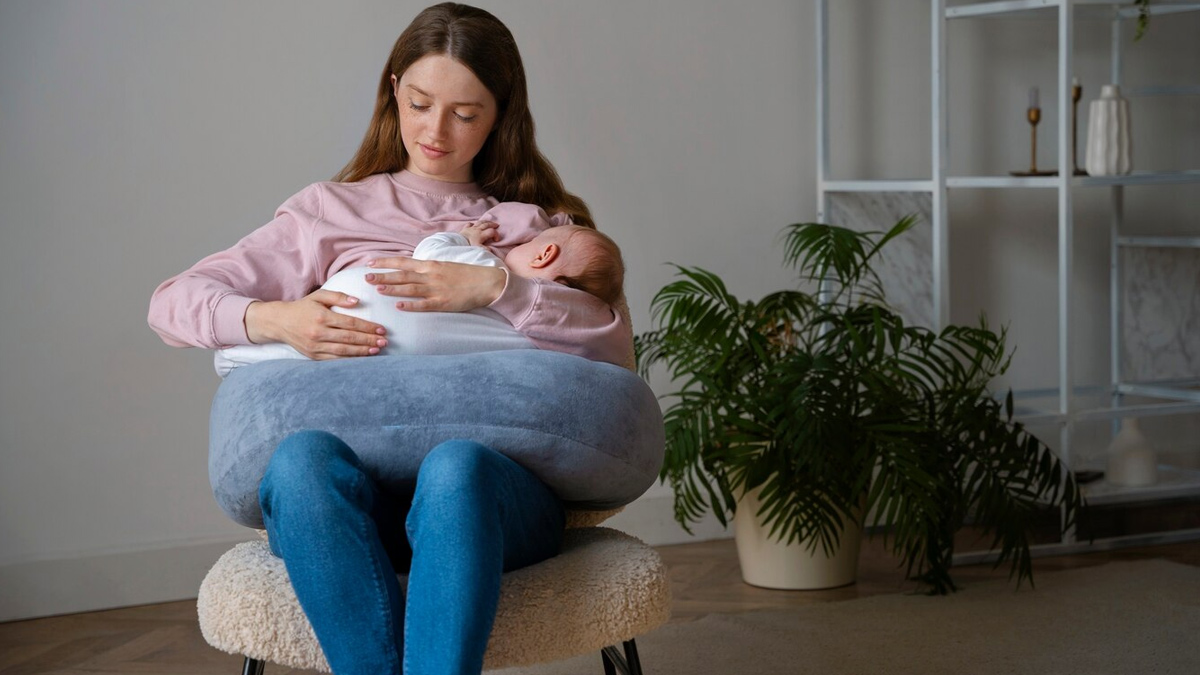
If you're pregnant, you've probably scrolled through the internet and searched about all the possible complications you can face, one of which is preeclampsia. Preeclampsia is a condition that occurs after 20 weeks of pregnancy. It is characterised by high blood pressure and signs of liver and kidney damage. However, did you know that preeclampsia can also occur after delivery, referred to as a condition called postpartum preeclampsia? If you're unaware of this condition, here's all you need to know about it.
Table of Content:-
Also Read: Meghan Markle Opens Up About ‘Rare and Scary’ Postpartum Preeclampsia Diagnosis After Childbirth
What Is Postpartum Preeclampsia?

Dr Lepakshi Dasari, Consultant Gynaecologist and Laparoscopic Surgeon, Yashoda Hospitals, Hyderabad, describes postpartum preeclampsia as a condition in which a woman develops high blood pressure after delivering her baby. "It usually happens within 48 hours after childbirth but can also occur up to six weeks later. It is serious because if not treated on time, it can lead to seizures, strokes, and other health problems," says Dr Dasari, adding that it is similar to preeclampsia that occurs during pregnancy, but here it shows up after the baby is born.
In general, preeclampsia affects 2-8% of pregnancies worldwide, but its incidence varies by race, ethnicity, and region, according to StatPearls Publishing. It is more common among Black and Hispanic women, contributing to about 26% of maternal deaths in these groups in the United States.
Causes Of Postpartum Preeclampsia

While the exact cause of postpartum preeclampsia is unknown, sudden changes in hormones and fluid levels in the body after childbirth are said to lead to high blood pressure, triggering postpartum preeclampsia, explains Dr Dasari.
It is important to know that even if a woman had normal blood pressure during pregnancy, she can still develop postpartum preeclampsia. However, there are some important risk factors that can help you keep a check on your health during and after your pregnancy. These include:
- Having diabetes (either before pregnancy or developed during pregnancy)
- High blood pressure starting after 20 weeks of pregnancy
- Obesity
- Carrying twins or more
- Heart disease related to high blood pressure
- Age over 40 years old
- Autoimmune diseases
- Black mothers
Warning Signs Of Postpartum Preeclampsia

Dr Dasari advises women to seek immediate medical help if they feel very tired, have swelling, headaches, vision changes, or trouble breathing after childbirth.
She says, “Most women show symptoms within 48 hours after delivery. However, in some cases, it can start even up to six weeks later — we call that late postpartum preeclampsia.”
Also Read: What Is Postpartum Hypertension? Find Out The Causes And Prevention For It After Child Birth
Treatment Options For Postpartum Preeclampsia
Treatment for postpartum preeclampsia usually involves:
- Medicines to lower blood pressure.
- Magnesium sulphate to prevent seizures.
- Blood thinners to prevent clots.
Word Of Caution
Unfortunately, women who have experienced postpartum preeclampsia are more likely to face it again in future pregnancies. That’s why doctors keep a close eye on them the next time around—not to cause worry but to ensure any warning signs are caught early. With the right care and support, many women go on to have healthy pregnancies and births. It’s about staying informed, being prepared, and knowing you’re not alone in the journey.
Also watch this video
How we keep this article up to date:
We work with experts and keep a close eye on the latest in health and wellness. Whenever there is a new research or helpful information, we update our articles with accurate and useful advice.
Current Version